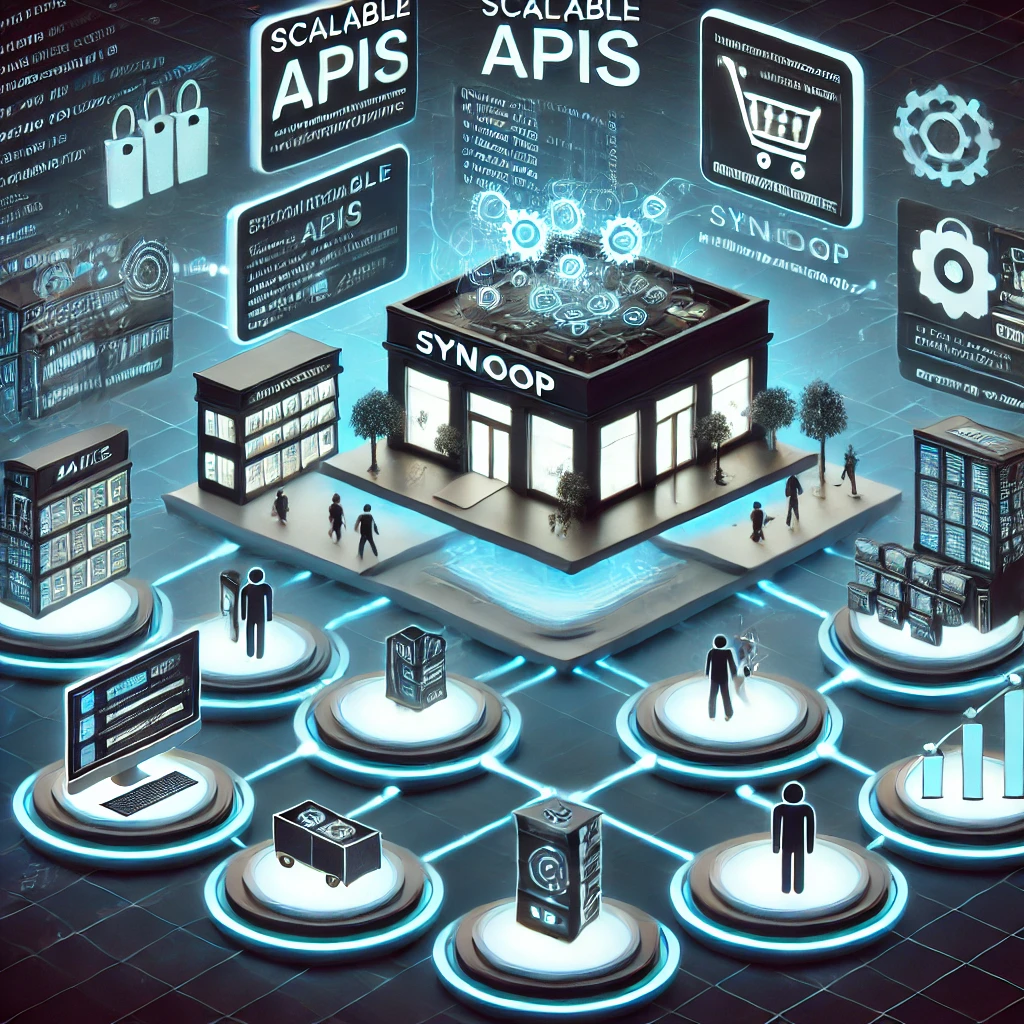Designing Scalable APIs for Retail Platforms Using Syncloop

Syncloop, a cutting-edge API development platform, empowers developers to design scalable and efficient APIs tailored for the retail industry. This blog explores how Syncloop facilitates the creation of scalable APIs, its key features, and strategies for meeting the unique demands of retail platforms.
The Importance of Scalability in Retail APIs
Retail platforms must accommodate a range of challenges, including:
- Seasonal Traffic Surges: Events like Black Friday and holiday sales can lead to exponential spikes in user activity.
- Product Catalog Growth: Platforms need to support an expanding range of products, often with rich metadata.
- Omnichannel Integrations: APIs must unify experiences across web, mobile, in-store, and third-party marketplaces.
- Real-Time Updates: Customers expect real-time inventory updates, personalized recommendations, and dynamic pricing.
APIs that can scale seamlessly ensure these challenges are met without compromising performance or user experience.
How Syncloop Enables Scalable APIs for Retail Platforms
Syncloop offers a robust toolkit for developing and managing scalable APIs, tailored to the unique needs of retail platforms:
1. Event-Driven Architecture
Syncloop supports event-driven workflows, enabling retail platforms to process and respond to real-time events like inventory updates, order placements, and customer interactions.
2. Load Balancing and Traffic Management
The platform provides built-in tools for load balancing and traffic throttling, ensuring APIs remain responsive during high-traffic periods.
3. Flexible Data Models
Syncloop’s dynamic data mapping capabilities enable developers to design APIs that handle complex retail data structures, such as hierarchical product categories, multi-tier pricing, and customer segmentation.
4. Integration with Third-Party Services
Retail platforms often rely on integrations with payment gateways, logistics providers, and marketing tools. Syncloop simplifies these integrations through its API connectors.
5. Scalable Cloud Infrastructure
Designed for the cloud, Syncloop APIs scale horizontally, handling increasing loads without requiring significant architectural changes.
6. Real-Time Analytics and Monitoring
Syncloop’s monitoring tools provide insights into API performance, identifying bottlenecks and ensuring high availability.
Benefits of Using Syncloop for Retail APIs
1. Improved Performance During High Traffic
Syncloop’s load balancing and event-driven architecture ensure retail platforms remain fast and reliable, even during peak shopping periods.
2. Faster Time-to-Market
Prebuilt templates and connectors reduce development time, allowing retailers to launch new features and services quickly.
3. Enhanced Customer Experience
Real-time APIs deliver personalized recommendations, up-to-date inventory information, and seamless checkout experiences.
4. Cost Efficiency
By leveraging Syncloop’s scalable cloud infrastructure, retailers can avoid overprovisioning resources, optimizing operational costs.
5. Future-Ready Architecture
Syncloop supports microservices and modular designs, making it easy to adapt APIs to future requirements or integrate new technologies.
Use Cases for Scalable Retail APIs with Syncloop
1. Omnichannel Retail
Syncloop enables seamless integration of in-store and online shopping experiences. APIs can synchronize inventory, order statuses, and customer profiles across channels.
2. Dynamic Pricing Engines
Retailers can use Syncloop to power real-time pricing engines that adjust based on demand, inventory levels, and competitor pricing.
3. Loyalty Programs
Syncloop APIs can manage scalable loyalty systems, offering real-time points tracking, tier upgrades, and personalized rewards.
4. Marketplace Integrations
Retail platforms can integrate with marketplaces like Amazon or eBay, synchronizing product listings, prices, and stock levels in real-time.
Best Practices for Designing Scalable Retail APIs with Syncloop
- Adopt an Event-Driven Approach: Use Syncloop’s event-driven capabilities to handle real-time updates efficiently.
- Design for Modularity: Build APIs as independent microservices to ensure scalability and easier maintenance.
- Optimize Data Structures: Use flexible data mapping to streamline complex retail data flows.
- Implement Caching Mechanisms: Reduce response times and server loads by caching frequently accessed data, such as product catalogs.
- Monitor and Optimize: Regularly use Syncloop’s analytics tools to identify performance bottlenecks and scale proactively.
- Leverage Security Features: Protect APIs with encryption, authentication, and role-based access controls to ensure data safety.
Conclusion
Syncloop simplifies the design and management of scalable APIs for retail platforms, offering tools that meet the demands of a competitive and dynamic market. Whether handling high-traffic events, integrating with third-party services, or delivering personalized customer experiences, Syncloop ensures retail APIs are reliable, efficient, and ready for growth.
By adopting best practices and leveraging the platform’s advanced features, retailers can create future-proof architectures that drive success in the digital age. Syncloop is your partner in building retail platforms that scale effortlessly with your business.
A graphical representation of a retail platform’s scalable API infrastructure, showcasing seamless integrations, dynamic data flows, and robust performance during high-traffic events.
Back to Blogs